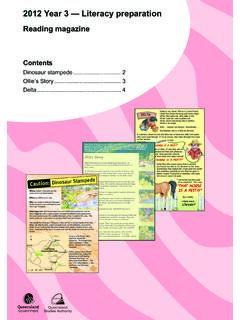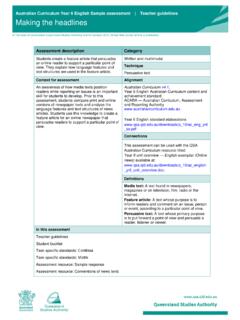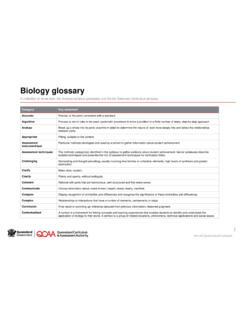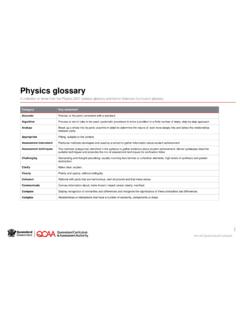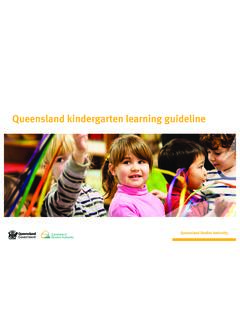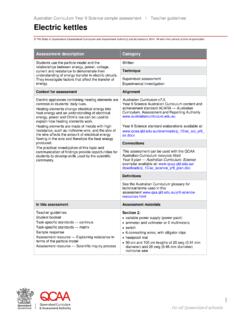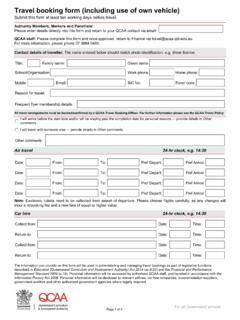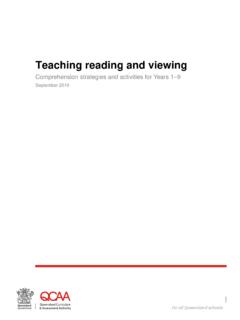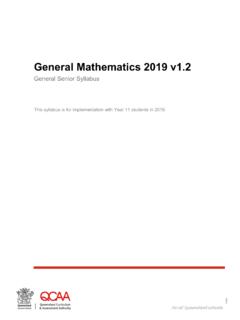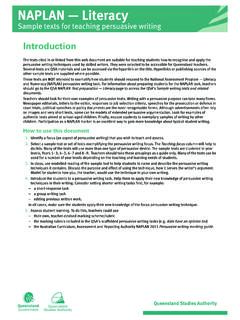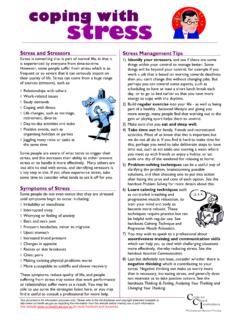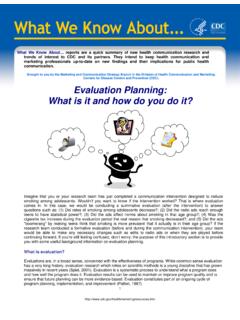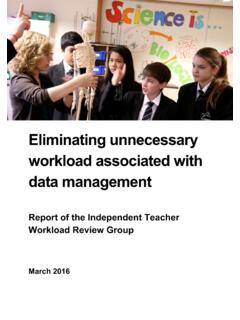Transcription of General Mathematics 2019 v1
1 220251 General Mathematics 2019 IA1 high-level annotated sample response April 2022 Problem-solving and modelling task (20%) This sample has been compiled by the QCAA to assist and support teachers to match evidence in student responses to the characteristics described in the instrument-specific marking guide (ISMG). This resource contains content that may be of a sensitive nature for students. Teachers should consult with school leaders and consider the suitability of the investigation in the school s context. Assessment objectives This assessment instrument is used to determine student achievement in the following objectives: 1. select, recall and use facts, rules, definitions and procedures drawn from Unit 3 Topics 1, 2 and/or 3 2.
2 Comprehend mathematical concepts and techniques drawn from Unit 3 Topics 1, 2 and/or 3 3. communicate using mathematical, statistical and everyday language and conventions 4. evaluate the reasonableness of solutions 5. justify procedures and decisions by explaining mathematical reasoning 6. solve problems by applying mathematical concepts and techniques drawn from Unit 3 Topics 1, 2 and/or 3. General Mathematics 2019 IA1 high-level annotated sample response Queensland Curriculum & Assessment AuthorityApril 2022 Page 2 of 15 Instrument-specific marking guide (ISMG) Criterion: Formulate Assessment objectives 1. select, recall and use facts, rules definitions and procedures drawn from Unit 3 Topics 1, 2 and/or 3 2.
3 Comprehend mathematical concepts and techniques drawn from Unit 3 Topics 1, 2 and/or 3 5. justify procedures and decisions by explaining mathematical reasoning The student work has the following characteristics: Marks documentation of appropriate assumptions accurate documentation of relevant observations accurate translation of all aspects of the problem by identifying mathematical concepts and techniques. 3 4 statement of some assumptions statement of some observations translation of simple aspects of the problem by identifying mathematical concepts and techniques. 1 2 does not satisfy any of the descriptors above. 0 Criterion: Solve Assessment objectives 1.
4 Select, recall and use facts, rules, definitions and procedures drawn from Unit 3 Topics 1, 2 and/or 3 6. solve problems by applying mathematical concepts and techniques drawn from Unit 3 Topics 1, 2 and/or 3 The student work has the following characteristics: Marks accurate use of complex procedures to reach a valid solution discerning application of mathematical concepts and techniques relevant to the task accurate and appropriate use of technology. 6 7 use of complex procedures to reach a reasonable solution application of mathematical concepts and techniques relevant to the task use of technology. 4 5 use of simple procedures to make some progress towards a solution simplistic application of mathematical concepts and techniques relevant to the task superficial use of technology.
5 2 3 inappropriate use of technology or procedures. 1 does not satisfy any of the descriptors above. 0 General Mathematics 2019 IA1 high-level annotated sample response Queensland Curriculum & Assessment AuthorityApril 2022 Page 3 of 15 Criterion: Evaluate and verify Assessment objectives 4. evaluate the reasonableness of solutions 5. justify procedures and decisions by explaining mathematical reasoning The student work has the following characteristics: Marks evaluation of the reasonableness of solutions by considering the results, assumptions and observations documentation of relevant strengths and limitations of the solution and/or model justification of decisions made using mathematical reasoning.
6 4 5 statements about the reasonableness of solutions by considering the context of the task statements of relevant strengths and limitations of the solution and/or model statements about decisions made relevant to the context of the task. 2 3 statement about a decision and/or the reasonableness of a solution. 1 does not satisfy any of the descriptors above. 0 Criterion: Communicate Assessment objective 3. communicate using mathematical, statistical and everyday language and conventions The student work has the following characteristics: Marks correct use of appropriate technical vocabulary, procedural vocabulary and conventions to develop the response coherent and concise organisation of the response, appropriate to the genre, including a suitable introduction, body and conclusion, which can be read independently of the task sheet.
7 3 4 use of some appropriate language and conventions to develop the response adequate organisation of the response. 1 2 does not satisfy any of the descriptors above. 0 General Mathematics 2019 IA1 high-level annotated sample response Queensland Curriculum & Assessment AuthorityApril 2022 Page 4 of 15 Task Investigate the phenomenon of ancestral heredity by focusing on the height of a parent and their biological child of the same sex, using data from students at your school. The investigation should explore the dependence of a male s height on his father s height, or the dependence of a female s height on her mother s height. Can a person s height be reliably predicted from their relative s height?
8 To complete this task, you must: respond with a range of understanding and skills, such as using mathematical language, appropriate calculations, tables of data, graphs and diagrams provide a response to the context that highlights the real-life application of Mathematics respond using a written report format that can be read and interpreted independently of the problem-solving and modelling task sheet develop a unique response use both analytic procedures and technology. See IA1 sample assessment instrument: Problem-solving and modelling task (20%) (available on the QCAA Portal). Sample response Criterion Marks allocated Provisional marks Formulate Assessment objective/s 1, 2, 3 4 4 Solve Assessment objective/s 1, 6 7 6 Evaluate and verify Assessment objective/s 4, 5 5 5 Communicate Assessment objective/s 3 4 4 Total 20 19 General Mathematics 2019 IA1 high-level annotated sample response Queensland Curriculum & Assessment AuthorityApril 2022 Page 5 of 15 The annotations show the match to the instrument-specific marking guide (ISMG) performance-level descriptors.
9 Table of contents 1 Introduction 2 Considerations Observations and assumptions Mathematical concepts and techniques Use of technology 3 Developing a solution 4 Evaluation to verify results Improving the model Strengths and limitations 5 Conclusion 6 Appendixes 7 Reference list 1 Introduction Sir Francis Galton (1822 1911) created the statistical concept of correlation. In 1903, assisted by Alice Lee, Pearson decided to supplement Galton s study on the inheritance of physical characteristics. The results presented in this report are a product of the investigation into the ancestral heredity of stature with a focus on a son s height compared to their father s height.
10 A sample of 100 male students from the current Year 12 cohort was selected for the study. 2 Considerations Observations and assumptions While fathers and sons represent a very large population, a sample of Year 12 peers will be used to represent the sons. Year 12 boys will be sampled because most boys reach their full height by the age of 16. A sample of 100 was randomly selected from various form classes as an appropriate size to investigate the stature of sons and their fathers. Since the Year 12 cohort has 213 male students, the decision to include approximately half of the cohort was deemed sufficient to allow for a variety of height data. Therefore, a valid comparison between father and son heights could be made.
